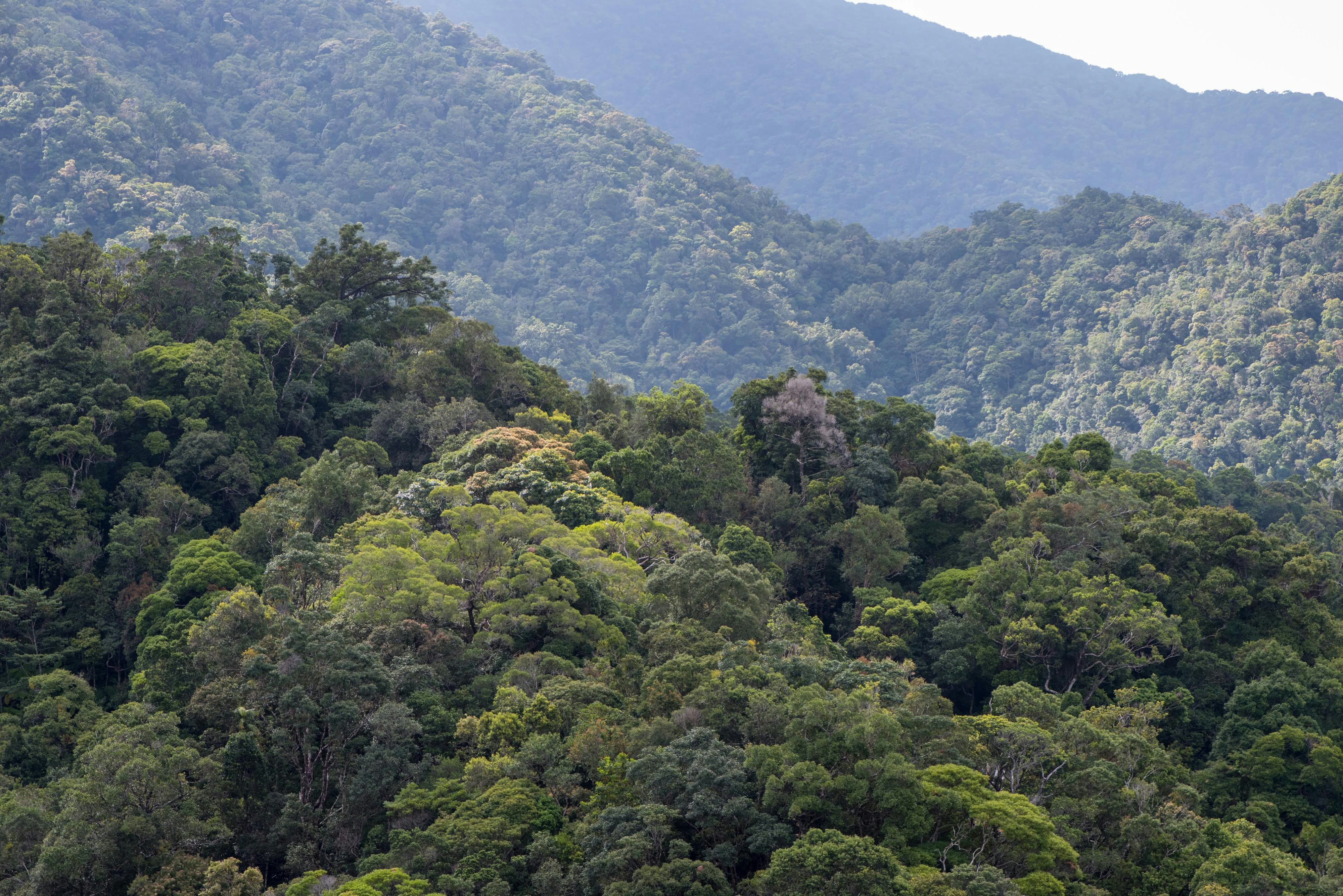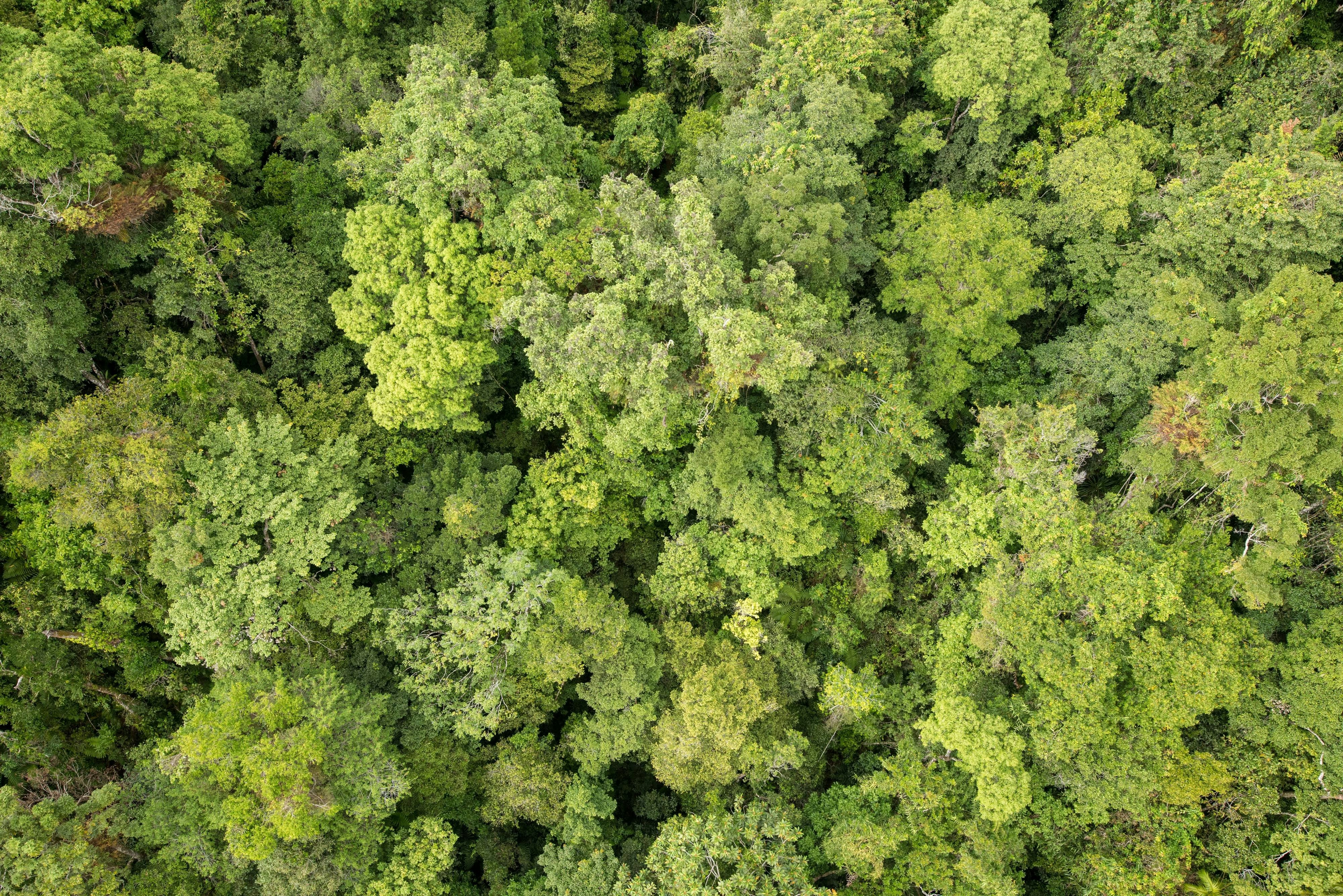
Cast your mind back to your first-ever biology lessons and two fundamental facts you learned about our world: humans are animals and plants are alive. Like other living things, plants breathe — “inhaling” carbon dioxide and “exhaling” oxygen. They do this through photosynthesis, taking energy from sunlight and carbon dioxide and emitting oxygen. It’s just one reason of the myriad reasons why we need trees to sustain life on this planet.
Carbon-in, oxygen-out sounds like a simple equation, but climate change is upsetting the balance. Old forests, particularly the thousands-of-years-old tropical forests of the Amazon, the Congo, and Costa Rica, are especially at risk. These old-growth forests, undisturbed for most of their lifetime, have “inhaled” carbon dioxide happily, storing the gas in the trees themselves to such a degree that they are carbon sinks, draining CO2 from the air. But we’re reaching the tipping point where that will no longer be the case, according to a study published Wednesday in the journal Nature.
It details how an international team of researchers analyzed nearly 50 years of tree mortality data from 24 old-growth forests in Australia. The rate of tree deaths in tropical forests has increased significantly over this period of time, and the consequences reverberate beyond the forest, the paper shows.
What’s new — A tree in these forests is twice as likely to die now as it was 35 years ago, the study shows. The findings suggest trees have half their original life expectancy and half the amount of time to store and trap carbon dioxide compared to a tree 35 years ago, on average. Overall mortality rates have increased from 1 percent to 2 percent. It doesn’t sound like a lot, but the study’s lead author David Bauman explains that the doubling is nonetheless significant.
“Even very small changes compounded over many years and decades build up to make some really profound changes in the way the forest functions,” Bauman, a postdoctoral ecology researcher at the French National Research Institute for Sustainable Development in Montpellier, tells Inverse.
The loss of tree biomass has increased by 12 percent since the 1970s, Bauman says. If old tree networks are also dying at a faster rate than before, biomass also decays more quickly, in turn releasing CO2 that’s been stored within them for years. Living tree networks also can’t keep up with the rate of loss.
The uptick in the rate of tree death is in part the forests’ response to anthropogenic climate change — climate change caused by human activity. Bauman and his team found that the change in mortality rate corresponded with a forest’s climatic conditions. For example, the mortality rate ramped up after there was an increase in water stress as a result of climate change — the forests consumed more water than was available, and so the scarcity of resources precipitated tree deaths.
There’s a degree of complexity to this dynamic: Previous research in mangroves and inland forests found that a particular water pattern brutalized forests: Decades of wet weather followed by historically long and intense droughts leave forests particularly vulnerable to other changes.
These results worry ecologists. Patrick Baker, a silviculture and forest ecology professor at the University of Melbourne who was not involved in the study, tells Inverse the evidence is “surprising and disheartening.”
The study, he says, benefits from being “one of the longest, most detailed descriptions of tree mortality in tropical forests anywhere in the world.” Specifically, he finds the consistently increased mortality since 1984 throughout 21 of the surveyed plots alarming.
“Tropical forests may soon become carbon sources instead of carbon sinks.”

Why it matters — If plants “inhale” carbon dioxide, tropical forests are essentially primadonna opera singers who can hold their breath for decades. As carbon sinks, these forests pull a significant amount of CO2 from the air. One study published in 2021 in the journal Nature Climate Change found that between 2001 and 2019, the world’s forests absorbed twice as much carbon dioxide as they emitted. That accounts for a net 7.6 billion metric tons of CO2 per year, which is 1.5 times more carbon than the United States emits within the same time frame.
Another concept schoolchildren learn early in their lessons is the greenhouse-gas effect. Carbon dioxide emissions trap heat within Earth’s atmosphere, as a greenhouse traps heat within its glass walls. The more carbon dioxide in the air, the more heat is trapped. One consequence of the greenhouse effect is warming surface and sea temperatures, though these changing conditions affect every area of the natural world.
If the rate of tree mortality continues to climb, these forests may actually emit more carbon than they absorb.
“Tropical forests may soon become carbon sources instead of carbon sinks,” Bauman warns. It’s not that trees would suddenly start belching out carbon dioxide or methane like cattle, but if the rate of death continues to increase, then these forests will, in decomposing, emit more carbon than they absorb.
It’s not just the trees in peril. Old-growth forests are home to great biodiversity, which would suffer from tree mortality.
“It would take hundreds of years to gain back, and some of it would be lost forever,” he says of the myriad animal species that dwell in these forests.

Digging into the details — While this study focuses on Australian tropical forests, the issue of increased tree mortality extends to similar ecosystems worldwide.
Bauman says that such a wealth of information on old-growth forests is lacking in other parts of the world. The dataset he and his team analyzed spans species (81 dominant tree species, to be precise) and environmental conditions, so they can see how change affects a variety of trees.
“This is the perfect natural lab to study these sorts of questions,” he tells Inverse.
Examining how tropical forests respond to climate change could also show researchers just how widespread the same effects are; if the Amazon and Australian forests suffer in the same way, then they can potentially benefit from the same solution. Bauman and his team want to understand whether these data are “transposable” to other regions.
What’s next — If only the solution to the problem this study reveals were as easy as planting more trees.
“Tree planting definitely has a role in the toolbox to mitigate climate change,” Bauman says, but “the time that it would take for young forests to reach the same amount of carbon stored as an old-growth forest would be such a long period that it couldn't possibly match the urgency of the climate crisis that we're living.”
Simply replenishing these forests with younger trees won’t restore the carbon released back into the atmosphere.
What’s more, when it comes to reforesting and tree planting, there’s a question of what kinds of trees to plant. Some foreign species may introduce a quick fix but could end up a biohazard that invades the region and harms native plants and animals.
The answer to Bauman is to replace fossil fuels as quickly as possible with renewable energy and to cut greenhouse emissions fast.
For his part, Bauman wants to build a network. He’s working with scientific collaborators across Western and Central Africa, South and Central America, Southeast Asia, and Australia to connect the dots as to how trees across the world are experiencing climate change.
This network would seek to “better understand how climate and climate change affects these forests in terms of how they grow, and how they die,” Bauman says.
With luck, understanding the problem on a large scale will also help with finding a global solution.
A widespread, short-term study could be more sustainable than another regionally focused, long-term one. Baker from the University of Melbourne laments that while long-term monitoring is critical, it’s difficult to replicate.
Baker also stresses the importance of reconstructing climate data in light of what he calls recent “megadroughts.” If those same climate conditions persist, he writes, “the consequences for tropical forests might be catastrophic.”







